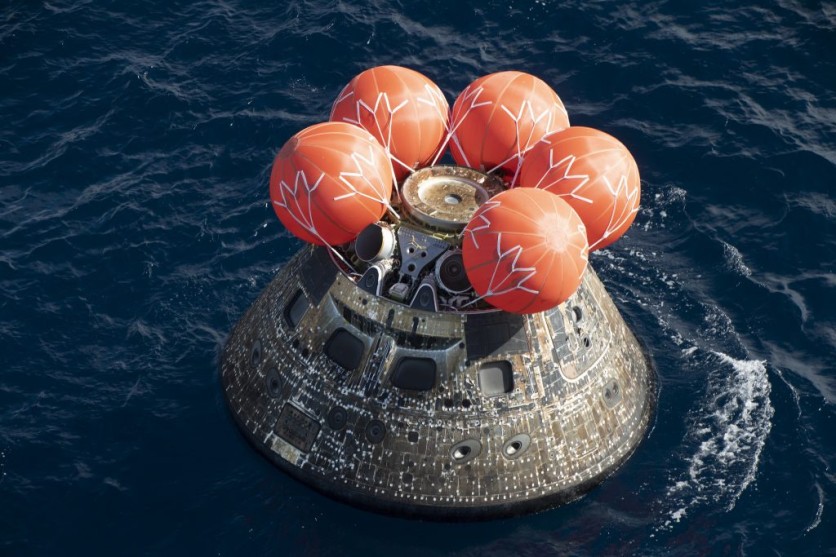NASA's Artemis 1 Orion spacecraft has finally landed back on Earth after an epic moon mission.
On Tuesday, Dec. 13, Orion arrived at Naval Base San Diego aboard the USS Portland. The capsule successfully splashed down in the Pacific Ocean, and a Navy recovery ship pulled it out of the water on Sunday, Dec. 11.
NASA's Kennedy Space Center (KSC) in Florida will receive the spacecraft on Wednesday, Dec. 14, after which it will continue an overland journey, according to an announcement by KSC officials announced on Twitter.
This will mark the official home return of Orion, which launched the unmanned Artemis 1 mission from KSC on Nov. 16 aboard a Space Launch System (SLS) megarocket.

Orion's Shakeout Trip
Space.com reports that on the shakeout trip, everything went according to plan since the SLS sent Orion on its path to the moon, and the spacecraft accomplished all of its intended goals during its flight.
The Orion capsule entered a lunar orbit on Nov. 25 and it began its way back home by Dec. 1. Four days later, it performed a long engine burn after a close flyby of the moon.
On Sunday, the spacecraft made a soft splashdown under parachutes as it headed back to Earth, some 100 miles (160 kilometers) west of Mexico's Baja Peninsula.
When Orion reaches KSC, the Artemis 1 team will thoroughly inspect it and evaluate how the spacecraft and its numerous subsystems fared in deep space throughout its return trip to our planet.
Additionally, technicians will take some hardware out of the capsule so that it can be processed and used again on Artemis 2, the upcoming lunar exploration mission in NASA's Artemis program.
Artemis 2
Artemis 2 is slated to send astronauts to the moon in 2024. If everything goes according to plan with that voyage, Artemis 3 will attempt to land using a SpaceX Starship vehicle near the lunar south pole after a year or two.
The south pole region, which is believed to contain a lot of water ice, is where NASA wants to establish a research facility. The organization also has plans to construct Gateway, a tiny space station in lunar orbit that will act as a launchpad for crewed and uncrewed trips to the moon's surface.
The initial Gateway components are planned to blast off in late 2024 onboard a SpaceX Falcon Heavy rocket.
The Artemis mission represents a significant turning point for NASA and all of the organizations involved in carrying it out. NASA has collaborated with several companies, including SpaceX and others, to make this mission a reality.
Artemis intends to land astronauts on the moon and establish a long-term continuous human presence there by the end of the decade. It will also send the first woman and person of color to the lunar surface.
Related Article : NASA Artemis: Orion's Callisto Tech Demo Shows iPad Use, Alexa Voice Command Possible-Send Messages to the Moon





